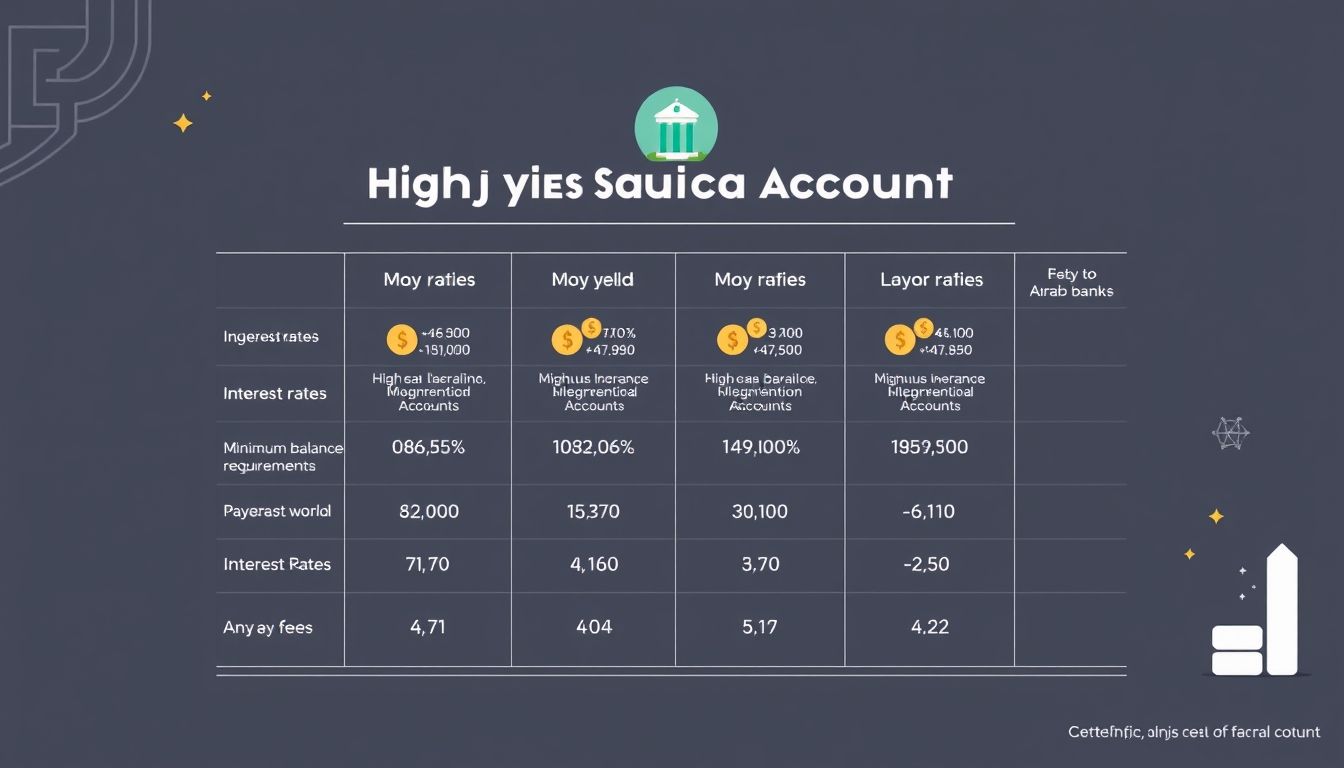Introduction: Why Smart Saving is Essential
In the Arab world, individuals face diverse economic challenges, from inflation to fluctuating oil prices and changing labor markets. Smart saving is not just an option; it's a necessity to ensure financial stability and achieve future goals. Whether you are a young professional starting your career, a family seeking to secure your future, or a retiree looking for additional income, understanding saving strategies appropriate for your life stage is crucial.
Chapter 1: Saving in Your 20s: Building the Financial Foundation
1.1. Defining Financial Goals
The first step in the saving journey is to clearly define financial goals. Do you want to buy a car? Save for a wedding? Or perhaps start investing? Defining goals helps you determine the amount you need to save and the time required to achieve it.
Example: A 25-year-old wants to buy a car within 3 years. After researching, they find that the car they want costs $15,000. This means they need to save $5,000 annually, or about $417 monthly.
1.2. Creating a Personal Budget
A personal budget is a powerful tool to track your income and expenses, and identify areas where you can reduce spending. Use budgeting apps or spreadsheets to record all your monthly expenses.
Tip: The 50/30/20 rule is a simple way to allocate your income: 50% for essential needs, 30% for wants, and 20% for saving and investing.
1.3. Paying Off Debt
If you have debt (such as student loans or credit cards), start paying it off as soon as possible. High-interest debt can hinder your ability to save and invest.
Strategy: The debt snowball method involves starting by paying off the smallest debt first, then moving on to the next largest debt, and so on. This gives you a sense of accomplishment and motivates you to continue.
1.4. Starting to Invest Early
Investing early is key to building long-term wealth. Even if you have a small amount, you can start investing in stocks, bonds, or exchange-traded funds (ETFs).
Warning: Investing involves risks. Before investing, research thoroughly and consult a financial advisor if necessary.
Chapter 2: Saving in Your 30s and 40s: Building Wealth and Securing the Future
2.1. Increasing Income
At this age, you should focus on increasing your income by developing your skills, obtaining professional certifications, or seeking better job opportunities. You can also consider starting a side business.
Statistic: People who obtain professional certifications often earn 20-30% higher incomes compared to those who do not.
2.2. Investing in Real Estate
Investing in real estate can be a good way to diversify your investment portfolio and generate additional rental income. However, you should be careful and conduct thorough research before investing.
Tip: Look for properties located in areas with high population and economic growth.
2.3. Planning for Children's College Education
If you have children, it is essential to start planning for their college education early. You can open a dedicated education savings account or invest in investment funds specifically designed for this purpose.
Example: In many Arab countries, government programs are available to support college education. Research these programs and take advantage of them.
2.4. Insurance
Insurance is an essential part of financial planning. Make sure you have adequate life, health, and property insurance coverage to protect yourself and your family from unexpected risks.
Chapter 3: Saving in Your 50s and 60s: Preparing for Retirement
3.1. Assessing Your Financial Situation
At this age, you should conduct a comprehensive assessment of your current financial situation, including your savings, investments, debts, and income sources. This will help you determine if you are on track to achieve your retirement goals.
3.2. Increasing Contributions to Retirement Plans
If you participate in a retirement plan (such as a government pension system or a 401k plan), consider increasing your contributions to the maximum extent possible. This will increase your retirement savings and reduce the taxes you pay.
3.3. Diversifying Investments
Diversifying investments is key to reducing risk and increasing long-term returns. Don't put all your money in one basket. Invest in a variety of assets, such as stocks, bonds, real estate, and commodities.
3.4. Planning for Healthcare
Healthcare is one of the biggest expenses faced by retirees. Make sure you have adequate health insurance coverage to cover the costs of treatment and medications.
Chapter 4: General Saving Strategies
4.1. Reducing Unnecessary Expenses
Review your monthly expenses and try to identify areas where you can reduce spending. Do you really need all those streaming subscriptions? Can you eat at home instead of restaurants?
4.2. Taking Advantage of Discounts and Offers
Look for discounts and offers available on products and services you use regularly. You can use coupon apps or subscribe to company newsletters to get exclusive deals.
4.3. Comparing Prices
Before buying any product or service, compare prices between different stores and suppliers. You can use price comparison websites or visit different stores to get the best deal.
4.4. Buying and Selling Used Items
Selling items you no longer use can be a good way to earn extra money. You can sell them online or at flea markets. You can also buy used items instead of new ones to save money.
Chapter 5: Saving and Investment Tools Available in the Arab World
5.1. Savings Accounts
Savings accounts are a safe and secure way to save money. Look for accounts that offer competitive interest rates.
5.2. Fixed Deposits
Fixed deposits are savings accounts that offer higher interest rates than regular savings accounts, but they require you to deposit your money for a specific period of time.
5.3. Investment Funds
Investment funds are a way to diversify your investments by investing in a variety of assets, such as stocks, bonds, and real estate.
5.4. Stocks and Bonds
Investing in stocks and bonds can be a way to achieve high returns, but it also involves high risks.
5.5. Islamic Sukuk
Islamic Sukuk are investment instruments that comply with Islamic law and are considered a good alternative to traditional bonds.
Chapter 6: The Role of Technology in Smart Saving
6.1. Budgeting Apps
Budgeting apps help you track your income and expenses, and identify areas where you can reduce spending.
6.2. Investment Apps
Investment apps allow you to invest in stocks, bonds, and investment funds through your smartphone.
6.3. Price Comparison Websites
Price comparison websites help you find the best deals on the products and services you need.
6.4. Robo-Advisors
Robo-advisors provide you with personalized investment advice based on your financial goals and risk tolerance.
Chapter 7: Challenges to Saving in the Arab World and How to Overcome Them
7.1. Inflation
Inflation reduces the purchasing power of your money. To combat inflation, invest in assets that maintain or increase their value over time, such as real estate and stocks.
7.2. Fluctuating Oil Prices
Fluctuating oil prices can affect the economy in general and individual incomes. Diversify your income sources and reduce your dependence on oil.
7.3. Unemployment
Unemployment can make it difficult to save money. Develop your skills and look for new job opportunities.
7.4. Political Instability
Political instability can affect the economy and make it difficult to plan for the future. Diversify your investments and reduce your exposure to political risks.
Chapter 8: Additional Tips for Smart Saving
8.1. Set Realistic Goals
Don't try to save too much money in too short a time. Set realistic and achievable goals.
8.2. Be Patient
Saving is a long-term process. Don't get discouraged if you don't see immediate results.
8.3. Learn Continuously
Stay up-to-date with the latest trends in finance and investment.
8.4. Seek Help
If you are having trouble saving, don't hesitate to seek help from a financial advisor.
Chapter 9: Success Stories from the Arab World
This chapter will present real-life stories of individuals from across the Arab world who have achieved their financial goals through smart saving and wise investing.
Example: The story of an Egyptian businesswoman who started a small business with her personal savings and succeeded in expanding it into a large company.
Chapter 10: Conclusion
Smart saving is key to achieving financial stability and realizing future goals. By setting financial goals, creating a personal budget, investing early, and diversifying investments, you can build a secure and prosperous financial future.
Note: This article is for informational purposes only and should not be considered financial advice. Consult a financial advisor before making any investment decisions.




